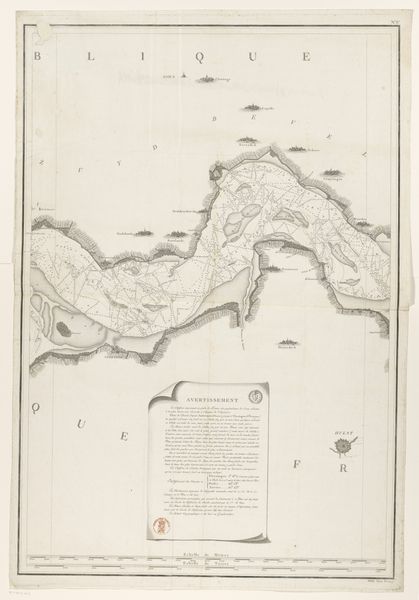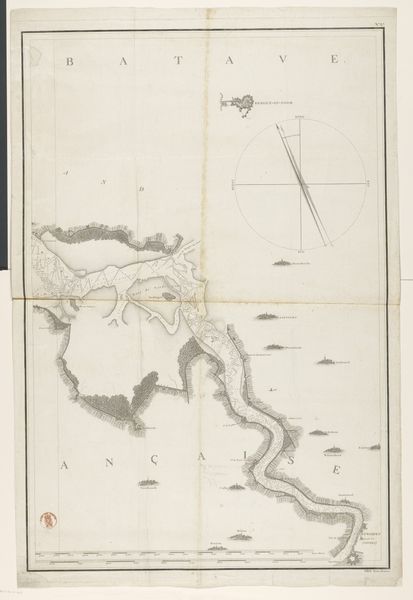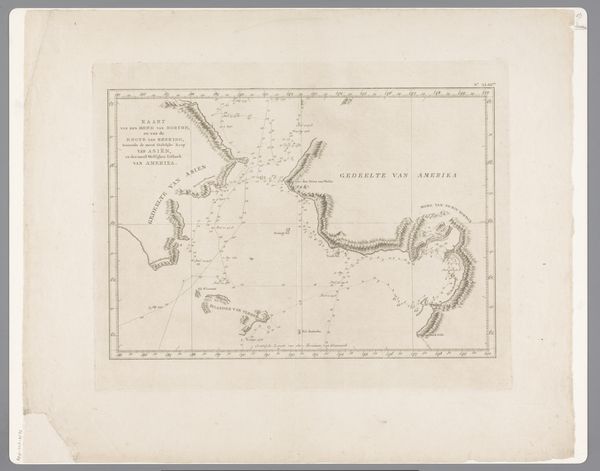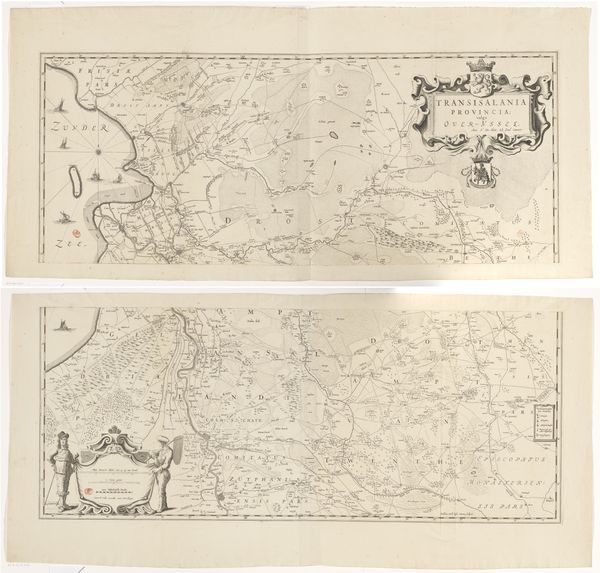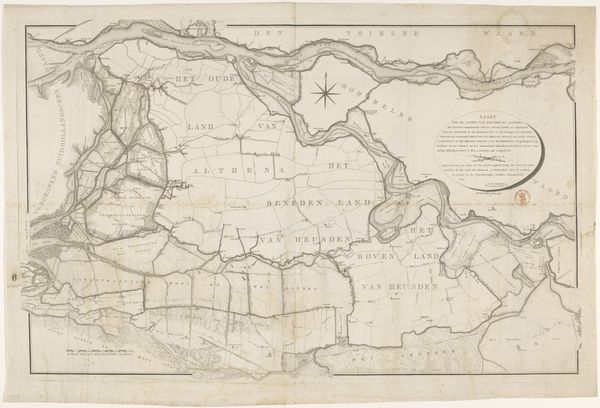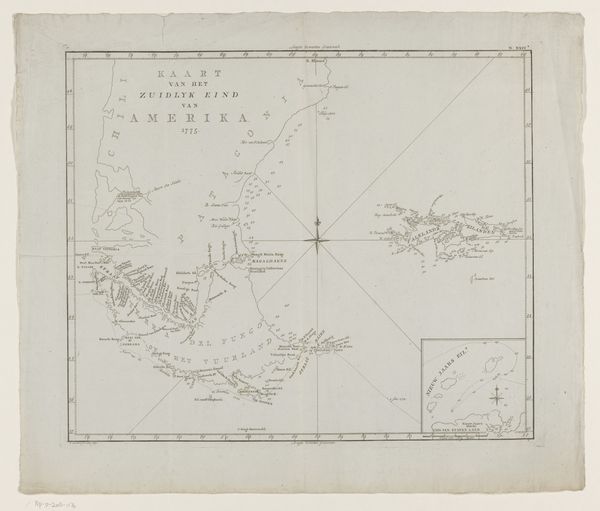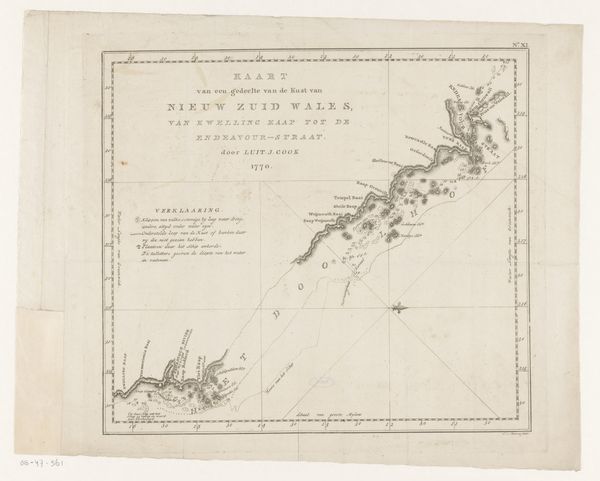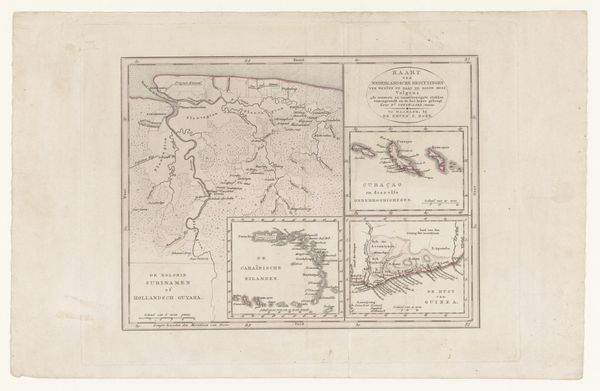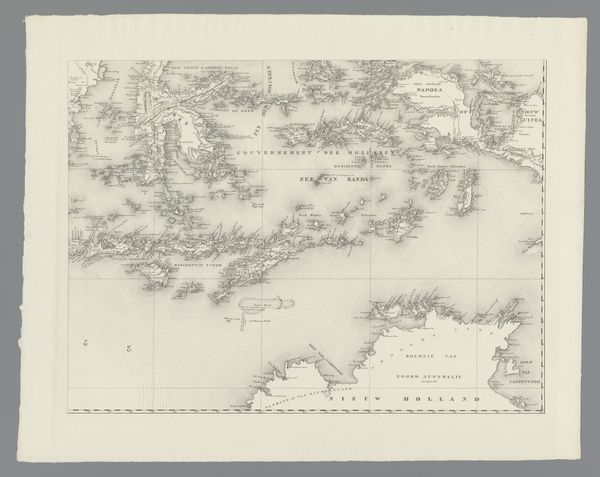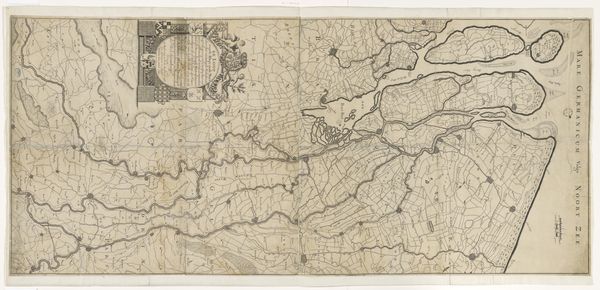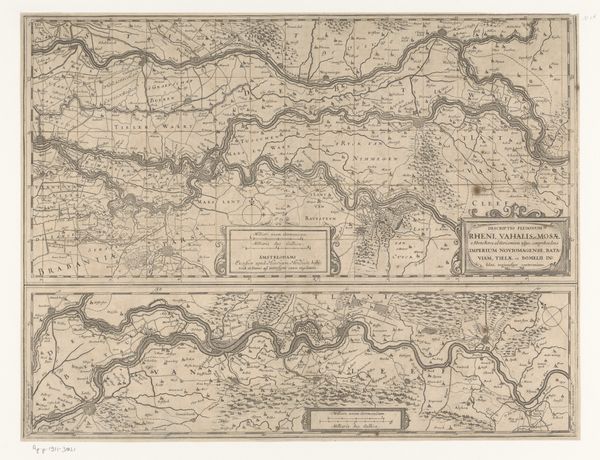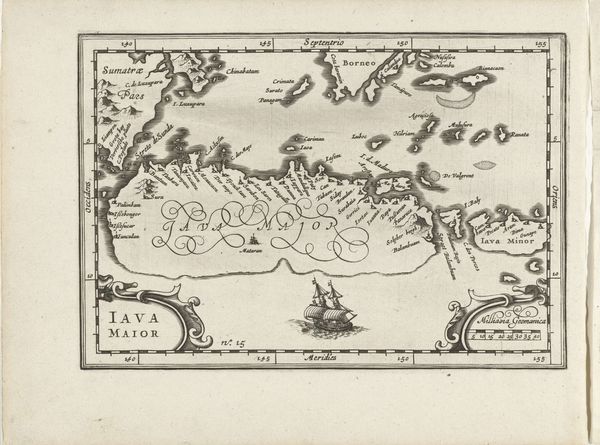
drawing, print, paper, ink, engraving
#
drawing
#
neoclacissism
# print
#
landscape
#
paper
#
ink
#
history-painting
#
engraving
Dimensions: height 954 mm, width 1761 mm
Copyright: Rijks Museum: Open Domain
Curator: This is a rather detailed 1799 map of the Westerschelde, or Western Scheldt, composed of three sections. E. Collin produced it using drawing, engraving, and ink on paper, placing it stylistically within the Neoclassical tradition. Editor: At first glance, it feels more like a drawing than a map; there's a delicate and ethereal quality to the lines and shading. The pale colors give it an almost dreamlike aura. It is as though the river itself is an important character. Curator: Absolutely. Navigational maps like these were crucial to Dutch mercantile power, but this wasn't purely a functional object. Notice how Collin delineates shifting power dynamics with the region divided into three parts representing three states: The Republic, part of the 'République' and 'Batavé'. Editor: Maps have always fascinated me for how they condense knowledge into symbolic form. We can view cartography as a deeply cultural act; consider the symbolic significance of the river itself—the Westerschelde provided crucial access to Antwerp and control over it was essential for trade and security, representing fluidity and connection. Curator: The very act of mapping has implications. During this era of revolution and nascent nation-states, the mapping of territory was, in many ways, the making of the nation. Who gets included? Who gets erased? Editor: Yes! These delicate lines and shapes speak volumes about the projection of power and strategic thinking in a time of massive political upheaval. It also represents psychological orientation. Curator: This piece encourages reflection on cartography as more than just geographic representation; the map becomes an argument. A statement on territorial control during a highly turbulent era in European history. Editor: The visual language tells a story far beyond navigation; it speaks of ambition, dominion, and perhaps even a touch of wistful romanticism. Looking at it with new eyes now!
Comments
No comments
Be the first to comment and join the conversation on the ultimate creative platform.
